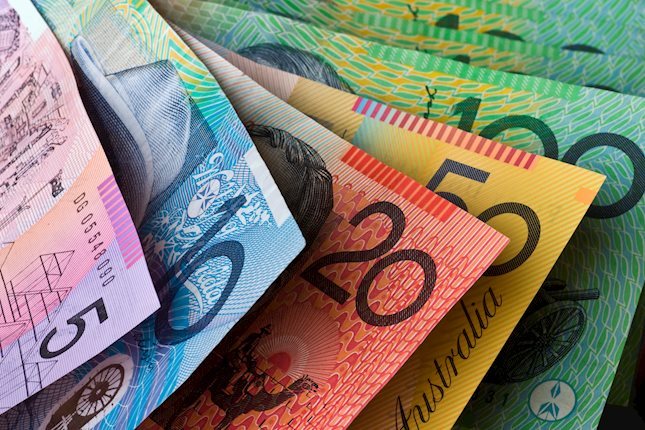- Pound Sterling gains remain unabated despite the UK’s poor factory data.
- UK firms cut heavily on input costs due to poor demand outlook.
- BoE's Swati Dhingra favored a rate cut if the growth rate dropped more than expectations.
The Pound Sterling (GBP) faces intense selling pressure as the stable United States core Consumer Price Index (CPI) for September month has weakened the risk appetite of the market participants. The outlook for the GBP/USD pair dampened as the Office for National Statistics (ONS) reported that United Kingdom factory data in August contracted for the second time in a row. UK firms operated on lower capacity as they aimed to achieve efficiency by cutting higher inventory backlogs and their respective labor forces due to declining demand.
A slowdown in demand and declining overall output is expected to discomfort Bank of England (BoE) policymakers, who are preparing for November’s interest rate decision. While the BoE's Katherine Mann continued to favor further policy-tightening to bring down inflation to 2% in a timely manner, the central bank's Swati Dhingra supported a rate cut if the growth rate fell beyond expectations.
Daily Digest Market Movers: Pound Sterling appeal fades as market sentiment dampens
- Pound Sterling fails to remain upbeat as the market mood dampens after a nominal decline in the US core inflation as expected. Also, weak UK factory data for August impacted the Pound Sterling.
- Monthly Industrial Production contracted at a higher pace of 0.7%, while investors forecasted a decline by 0.2%. In the same period, the pace of decline in Manufacturing Production was double expectations of 0.4%. In July, the factory data contracted by more than 1%.
- On an annualized basis, Industrial Production landed at 1.3%, below the estimates of 1.7% but higher than the former reading of 1%. The Manufacturing Production at 2.8% remained below expectations and July’s reading of 3.4% and 3.1%, respectively.
- The monthly Gross Domestic Product (GDP) grew by 0.2% as expected. In July, the overall output contracted by 0.6%.
- The factory data has contracted for the second time in a row as UK firms have cut down on inventory and labor due to a poor demand outlook.
- Meanwhile, investors remain mixed about the Bank of England’s interest rate outlook as the UK economy is operating at higher inflation, which is more than three times the desired rate of 2%.
- This week, BoE policymaker Katherine Mann said that central bankers should adopt an aggressive approach toward interest rates. The central bank has to bring down rising inflation expectations along with its priority of bringing down inflation to 2%.
- Contrary to Mann, BoE policymaker Swati Dhingra said the UK economy has already ‘flatlined’ and that almost 25% of the impact of higher interest rates has already been absorbed by the economy. She favored a rate cut sooner rather than later if the growth rate declined beyond expectations.
- The risks of a rebound in inflation are persistent as deepening Middle East tensions would keep the oil market extremely tight through 2024. Also, the expected participation of Iran in the Israel-Hamas conflict could disrupt the supply chain significantly.
- Shortage of energy in the UK economy due to supply chain disruptions could accelerate headline inflation, and UK Prime Minister Rishi Sunak may miss fulfilling his promise of halving inflation to 5.2%.
- The US Dollar Index recovers sharply after the inflation report for September remained mostly in line with estimates. The headline CPI expanded at a higher pace of 0.4% while investors anticipated the growth at 0.3%. Monthly and annual core inflation remained in line with estimates at 0.3% and 4.15 respectively.
- Meanwhile, expectations of one more interest rate increase from the Federal Reserve remained lower as Fed policymakers have turned worried about rising US Treasury yields.
Technical Analysis: Pound Sterling drops sharply to near 1.2250
Pound Sterling faces selling pressure above the crucial resistance of 1.2300 as market sentiment improved. The broader risk outlook remains cautious as participation of more nations in Middle East conflicts could injure the global supply chain significantly. The Cable has climbed above the 20-day Exponential Moving Average (EMA) at 1.2280, which indicates that the short-term trend has turned bullish.
BoE FAQs
What does the Bank of England do and how does it impact the Pound?
The Bank of England (BoE) decides monetary policy for the United Kingdom. Its primary goal is to achieve ‘price stability’, or a steady inflation rate of 2%. Its tool for achieving this is via the adjustment of base lending rates. The BoE sets the rate at which it lends to commercial banks and banks lend to each other, determining the level of interest rates in the economy overall. This also impacts the value of the Pound Sterling (GBP).
How does the Bank of England’s monetary policy influence Sterling?
When inflation is above the Bank of England’s target it responds by raising interest rates, making it more expensive for people and businesses to access credit. This is positive for the Pound Sterling because higher interest rates make the UK a more attractive place for global investors to park their money. When inflation falls below target, it is a sign economic growth is slowing, and the BoE will consider lowering interest rates to cheapen credit in the hope businesses will borrow to invest in growth-generating projects – a negative for the Pound Sterling.
What is Quantitative Easing (QE) and how does it affect the Pound?
In extreme situations, the Bank of England can enact a policy called Quantitative Easing (QE). QE is the process by which the BoE substantially increases the flow of credit in a stuck financial system. QE is a last resort policy when lowering interest rates will not achieve the necessary result. The process of QE involves the BoE printing money to buy assets – usually government or AAA-rated corporate bonds – from banks and other financial institutions. QE usually results in a weaker Pound Sterling.
What is Quantitative tightening (QT) and how does it affect the Pound Sterling?
Quantitative tightening (QT) is the reverse of QE, enacted when the economy is strengthening and inflation starts rising. Whilst in QE the Bank of England (BoE) purchases government and corporate bonds from financial institutions to encourage them to lend; in QT, the BoE stops buying more bonds, and stops reinvesting the principal maturing on the bonds it already holds. It is usually positive for the Pound Sterling.
Information on these pages contains forward-looking statements that involve risks and uncertainties. Markets and instruments profiled on this page are for informational purposes only and should not in any way come across as a recommendation to buy or sell in these assets. You should do your own thorough research before making any investment decisions. FXStreet does not in any way guarantee that this information is free from mistakes, errors, or material misstatements. It also does not guarantee that this information is of a timely nature. Investing in Open Markets involves a great deal of risk, including the loss of all or a portion of your investment, as well as emotional distress. All risks, losses and costs associated with investing, including total loss of principal, are your responsibility. The views and opinions expressed in this article are those of the authors and do not necessarily reflect the official policy or position of FXStreet nor its advertisers. The author will not be held responsible for information that is found at the end of links posted on this page.
If not otherwise explicitly mentioned in the body of the article, at the time of writing, the author has no position in any stock mentioned in this article and no business relationship with any company mentioned. The author has not received compensation for writing this article, other than from FXStreet.
FXStreet and the author do not provide personalized recommendations. The author makes no representations as to the accuracy, completeness, or suitability of this information. FXStreet and the author will not be liable for any errors, omissions or any losses, injuries or damages arising from this information and its display or use. Errors and omissions excepted.
The author and FXStreet are not registered investment advisors and nothing in this article is intended to be investment advice.
Recommended content
Editors’ Picks

AUD/USD holds the uptick above 0.6450 after mixed Chinese data
AUD/USD is holding higher ground above 0.6450 in Friday's Asian trading, shrugging off mixed Chinese activity data for October. Traders are looking to cash in after the recent downfall even though the US Dollar stay firm and market mood remains cautious. US data is next in focus.

USD/JPY reverses Japan's GDP-led spike to 156.75
USD/JPY pares gains to near 156.50 in Asian session on Friday, revesing the early spike to 156.75 fuelled by unimpressive Japanese Q3 GDP data. The pair is facing headwinds from Japanese verbal intervention and a tepid risk tone, despite the sustained US Dollar strength.

Gold price struggles to gain ground on bullish US Dollar, US PPI data looms
Gold price struggles to gain ground around $2,570 on Friday after bouncing off a two-month low in the previous session. The precious metal remains under selling pressure amid the strong US Dollar and the rising uncertainty surrounding the Federal Reserve's pace of interest rate reductions.

Bitcoin Price Forecast: BTC eyes $100K, what are the key factors to watch out for?
Bitcoin trades below $90K in the early Asian session on Friday as investors realized nearly $8 billion in profits in the past two days. Despite the profit-taking, Bitwise CIO Matt Hougan suggested that BTC could be ready for the $100K level, fueled by increased stablecoin supply and potential government investment.

Trump vs CPI
US CPI for October was exactly in line with expectations. The headline rate of CPI rose to 2.6% YoY from 2.4% YoY in September. The core rate remained steady at 3.3%. The detail of the report shows that the shelter index rose by 0.4% on the month, which accounted for 50% of the increase in all items on a monthly basis.

Best Forex Brokers with Low Spreads
VERIFIED Low spreads are crucial for reducing trading costs. Explore top Forex brokers offering competitive spreads and high leverage. Compare options for EUR/USD, GBP/USD, USD/JPY, and Gold.